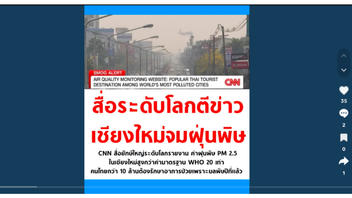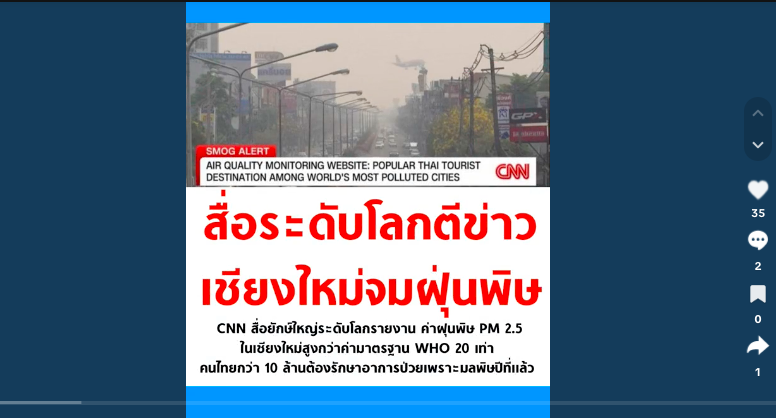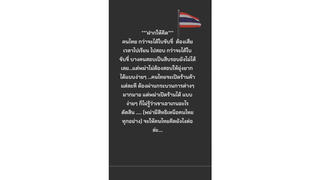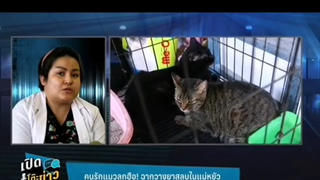
Did PM2.5 - fine particulates that are usually a key indicator of air quality - in Chiang Mai exceed the WHO standard by 20 times in March 2024? No, that's not true: According to the Climate change data center of Chiang Mai University, PM2.5 levels exceeded the WHO standards by 9.8 times on March 9, 2024, when the claim started circulating on social media.
The claim appeared in a video (archived here) published on TikTok on March 19, 2024. The caption (translated from Thai to English by Lead Stories staff) read:
International media criticized Thailand for air pollution in Chiang Mai
This is what the post looked like on TikTok at the time of writing:

(Source: TikTok screenshot taken on Mon Apr 1 18:26:00 2024 UTC)
The claim originated from an international publication (archived here). An article published in The Diplomat dated March 22, 2024, reported that "Thailand's PM Misses the Forest for the Trees on the Country's Pollution Problem," accusing the Thai Prime Minister of not grasping the gravity of the situation as a whole, and also claimed Chiang Mai's pollution levels were higher than the WHO standard by 20 times.
There are high pollution levels in Chiang Mai, but according to WHO guidelines (archived here), the average exposure to PM 2.5 fine inhalable particles (PM stands for particulate matter and 2.5 refers to size) over a 24-hour period should not exceed 15 µg/m3 for more than 3-4 days per year (archived here). The pollution control department of the Ministry of Natural Resources (archived here) measures air pollution in Chiang Mai in real-time. On March 9, 2024, the average PM2.5 levels reached approximately a 147.7 AQI (air quality index) score, which is about 9.8 times higher than the WHO standard, over a 24-hour period.
Chiang Mai (archived here) is the largest city in northern Thailand and the third largest city in the nation after metropolitan Bangkok and Nakhon Ratchasima. Many beautiful places in the area attract tourists from all over the world, including Thai people, who come to visit the natural beauty. In March 2024, Chiang Mai was facing a pollution issue related to PM 2.5, and the number of people (archived here) who had gotten sick due to airborne pollutants was significantly increasing. Actually, PM 2.5 in Chiang Mai is caused by several factors (archived here), for example, wildfires that occur during certain seasons and agricultural burning.
The Anti Fake News Thailand website (archived here) checked the information with the Ministry of Natural Resources and Environment, who investigated the claim, and they confirmed that it is not true that PM2.5 in Thailand's Chiang Mai was 20 times higher than the WHO standard, calling it disinformation.










